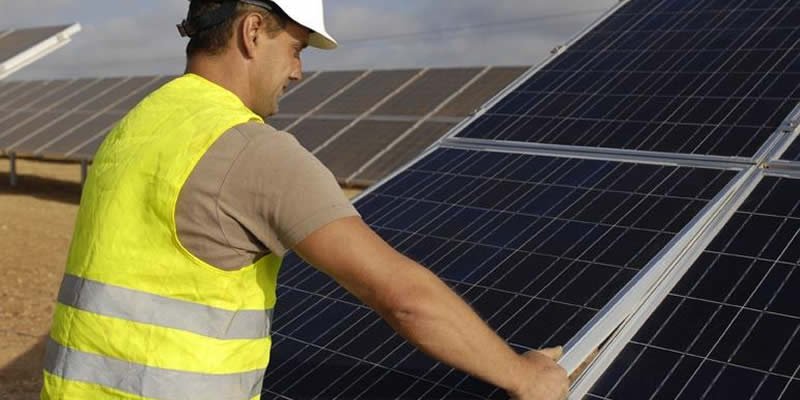
The Backbone of Solar
Big PV is simple. A solar farm is designed, built, and connected to the grid. Job well done. End of story.
Not by a long shot. The story is just beginning. These large plants - 1 MW, 5 MW, 20 MW, 50 MW and larger - still need to prove their worth over 20 plus years. Just as with any oil, coal-fired or nuclear plant, these solar farms, with their harvest of photon-generated kilowatt-hours, are businesses. And as obvious as it might sound, businesses need to make a profit. In order to create solar funds that offer participants many happy returns on investments, the performance of these PV giants - and ensuring they have long, healthy lives - requires the services of an expert: the solar asset manager.
One of them is Federico Giannandrea. He is the head of Foresight Italy, part of the UK-headquartered Foresight Group that oversees more than 500 MW of solar farms - mostly bought on the secondary market - in the UK, Germany and Italy. "We solar asset managers are the guys who are the backbone of the renewable energy landscape across Europe."
The lay of the land
And while that landscape in Europe may sometimes look bleak and rocky for installing new solar as subsidies get slashed and the threats of retroactive cuts persist, the acres of panels already in place are fields of beauty to solar asset managers. But the plants need upkeep for the investors of funds looking for returns that beat out what current interest rates can offer. And that means making sure the operations and maintenance (O&M) partners - those with their feet on the installation ground - are performing their jobs well.
What solar asset managers do is control, control, control; improve, improve, improve; and challenge, challenge, challenge.
"What solar asset managers do," says one manager (who asked that his name not be used) "is control, control, control; improve, improve, improve; and challenge, challenge, challenge."
The challenge mainly concerns the contracted O&M partners. Sometimes, he says, they can be "a catastrophe." Even though these partners are contractually tied to earning fees based on electricity generation, they can be lax in making necessary repairs to squeeze out as much power from the plants as possible. "If you don't talk to them on a regular basis and don't challenge them," he adds, "they do the maintenance and repairs when they want."
While solar asset managers face a myriad of duties - dealing with financing, banks, government ministries, invoicing ("You name it," says Giannandrea) - it all really comes down to nutrition: feeding the grid. "At the end of the day," says Alexander Rietz, portfolio manager at Germany-headquartered KGAL Investment Management GmbH & Co. KG, "the technical performance is the only parameter that can at least partially be impacted by an asset manager." Including wind, KGAL manages nearly 1 GW, with solar about a third of its portfolio capacity at 360 MW on investments of €1.3 billion.
Europe's solar legacy lives on
It is no revelation that the market for PV capacity additions in Europe has decreased significantly. Nevertheless, says Rietz, if stable regulatory frameworks and fairly sizeable market volumes of new PV projects remain, it makes Germany, the UK and France "selective but still attractive destinations." And when solar farms, whether old or new, have not been properly maintained, there is still room for a good solar curator to make a move. "A growing number of those assets will switch hands over the next few years, and any well positioned solar asset manager is likely to benefit from this development as well." Foresight's Giannandrea takes the example of Spain, where nearly a decade after a market-killing drop of government subsidy support decimated the hope for new PV installations, solar's legacy lives on. "If someone wants to make a stop/loss [on investment] and come out of the market, there are new players willing to take on the Spanish risks," he says. "The market is still quite active."
The landscape is reshaping.
Nonetheless, Europe can be a hard market for maintaining investor involvement. Increasingly, those that manage the solar funds - and ensure the systems are running smoothly - are finding it difficult to come up with decent projects. Some are looking for more action overseas or extending their reach into investment funds covering the grid and storage. "We need to diversify," says one observer. KGAL is also taking what Rietz calls "a more global and opportunistic approach." Foresight already has 9 MW in the US. "The landscape," says Giannandrea, "is reshaping."
KGAL's Rietz still sees a rising appetite for solar investments in Europe. But since long-term stable return expectations are higher than current interest rates and risk/return profiles that are still perceived as superior, "previous return expectations have come down due to the tougher competition for solar assets," he adds. Speaking off the record, one manager noted that putting money into a fund for a solar farm "is definitely riskier" than for a ten-year government bond. "Maybe if you have invested in Greece," he quips, "it's a different story."
Still, the choice of climate-change conscious investors in Europe - whether via churches, insurance companies, or pension schemes - to put their money on solar not only makes environmental sense, but practical as well. "It's easier to run a solar plant," says Foresight's Giannandrea with a smile, "than a nuclear plant."
